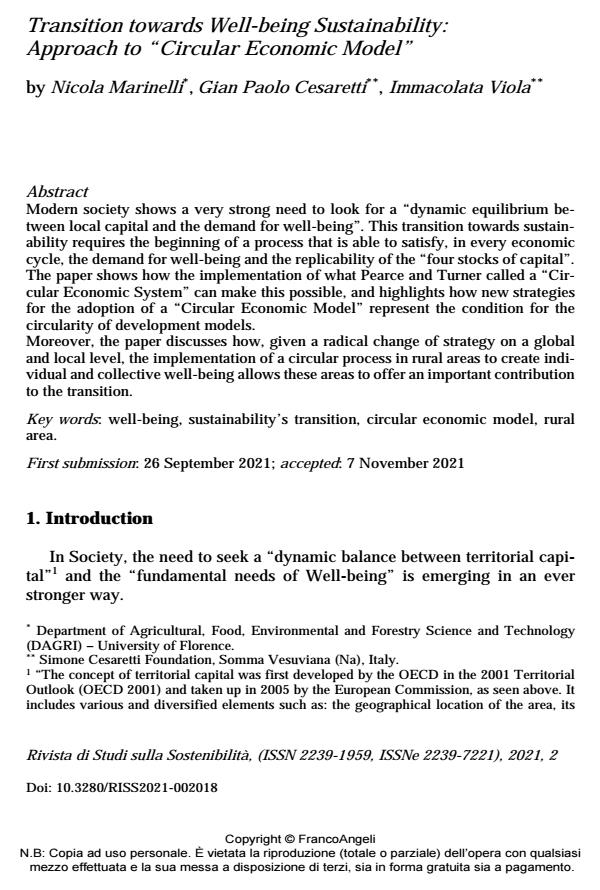Transition towards Well-being Sustainability:Approach to "Circular Economic Model"
Journal title RIVISTA DI STUDI SULLA SOSTENIBILITA'
Author/s Nicola Marinelli, Gian Paolo Cesaretti, Immacolata Viola
Publishing Year 2022 Issue 2021/2
Language English Pages 20 P. 263-282 File size 200 KB
DOI 10.3280/RISS2021-002019
DOI is like a bar code for intellectual property: to have more infomation
click here
Below, you can see the article first page
If you want to buy this article in PDF format, you can do it, following the instructions to buy download credits

FrancoAngeli is member of Publishers International Linking Association, Inc (PILA), a not-for-profit association which run the CrossRef service enabling links to and from online scholarly content.
Modern society shows a very strong need to look for a "dynamic equilibrium be-tween local capital and the demand for well-being". This transition towards sus-tainability requires the beginning of a process that is able to satisfy, in every eco-nomic cycle, the demand for well-being and the replicability of the "four stocks of capital". The paper shows how the implementation of what Pearce and Turner called a "Circular Economic System" can make this possible, and highlights how new strat-egies for the adoption of a "Circular Economic Model" represent the condition for the circularity of development models. Moreover, the paper discusses how, given a radical change of strategy on a global and local level, the implementation of a circular process in rural areas to create in-dividual and collective well-being allows these areas to offer an important contri-bution to the transition.
Keywords: well-being, sustainability’s transition, circular economic model, rural area.
Nicola Marinelli, Gian Paolo Cesaretti, Immacolata Viola, Transition towards Well-being Sustainability:Approach to "Circular Economic Model" in "RIVISTA DI STUDI SULLA SOSTENIBILITA'" 2/2021, pp 263-282, DOI: 10.3280/RISS2021-002019